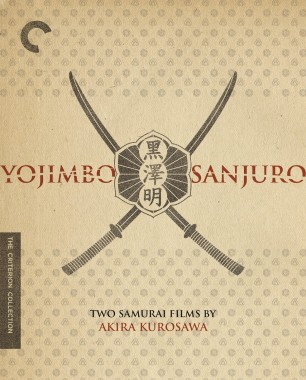Kagemusha

When a warlord dies, a peasant thief is called upon to impersonate him, and then finds himself haunted by the warlord’s spirit as well as his own ambitions. In his late color masterpiece Kagemusha, Akira Kurosawa returns to the samurai film and to a primary theme of his career—the play between illusion and reality. Sumptuously reconstructing the splendor of feudal Japan and the pageantry of war, Kurosawa creates a historical epic that is also a meditation on the nature of power.
BLU-RAY SPECIAL EDITION FEATURES
- Restored high-definition digital transfer, with DTS-HD Master Audio 4.0 soundtrack
- Audio commentary by Kurosawa scholar Stephen Prince
- Lucas, Coppola, and Kurosawa, an interview piece from 2005 in which directors George Lucas and Francis Ford Coppola discuss Kurosawa and Kagemusha
- Documentary from 2003 on the making of the film
- Image: Kurosawa’s Continuity, a piece from 1993 reconstructing Kagemusha through Kurosawa’s paintings and sketches
- Suntory Whisky commercials made on the set of Kagemusha
- Gallery of storyboards painted by Kurosawa and images of their realization on-screen
- Theatrical trailers and teasers
- PLUS: An essay by scholar Peter Grilli and an interview with Kurosawa by renowned critic Tony Rayns
Cover painting by Akira Kurosawa
Collector's Sets
BLU-RAY SPECIAL EDITION FEATURES
- Restored high-definition digital transfer, with DTS-HD Master Audio 4.0 soundtrack
- Audio commentary by Kurosawa scholar Stephen Prince
- Lucas, Coppola, and Kurosawa, an interview piece from 2005 in which directors George Lucas and Francis Ford Coppola discuss Kurosawa and Kagemusha
- Documentary from 2003 on the making of the film
- Image: Kurosawa’s Continuity, a piece from 1993 reconstructing Kagemusha through Kurosawa’s paintings and sketches
- Suntory Whisky commercials made on the set of Kagemusha
- Gallery of storyboards painted by Kurosawa and images of their realization on-screen
- Theatrical trailers and teasers
- PLUS: An essay by scholar Peter Grilli and an interview with Kurosawa by renowned critic Tony Rayns
Cover painting by Akira Kurosawa

Cast
- Tatsuya Nakadai
- Shingen Takeda
- Tsutomu Yamazaki
- Nobukado Takeda
- Kenichi Hagiwara
- Katsuyori Takeda
- Kota Yui
- Takemaru Takeda
- Shuji Otaki
- Masakage Yamagata
- Hideo Murata
- Nobuharu Baba
- Takayuji Shiho
- Masatoyo Naito
- Shuhei Sugimori
- Danjo Kosaka
- Noboru Shimizu
- Masatane Hara
- Koji Shimizu
- Kasusuke Atobe
- Sen Yamamoto
- Nobushige Oyamada
- Jinpachi Nezu
- Sohachiro Tsuchiya
- Kai Ato
- Zenjiro Amemiya
- Yutaka Shimaka
- Jingoro Hara
- Eiichi Kanakubo
- Okura Amari
- Yugo Miyazaki
- Mataichi Tomono
- Mitsuko Baisho
- Oyunokata
- Kaori Momoi
- Otsuyanokata
- Daisuke Ryu
- Nobunaga Oda, lord of the Oda clan
- Tetsuo Yamashita
- Nagahide Niwa, his aide-de-camp
- Yasuhito Yamanaka
- Ranmaru Mori, his page
- Masayuki Yui
- Ieyasu Tokugawa, lord of the Tokugawa clan
- Yasushi Doshida
- Kazumasa Ishikawa, his aide-de-camp
- Norio Matsui
- Tadatsugu Sakai, his aide-de-camp
- Noboru Sone
- Heihachiro Honda, his chief samurai
- Toshihiko Shimizu
- Kenshin Uesugi, lord of the Echigo territory
- Takashi Shimura
- Gyobu Taguchi, deputy of Nobunaga Oda
- Francis S. Sercu
- Missionary
- Alexander Kairis
- Missionary
- Jean-Pierre Carlini
- Missionary
- Kamatari Fujiwara
- Shingen Takeda’s doctor
- Toshiaki Tanabe
- Kugutsushi/Spy
- Yoshimitsu Yamaguchi
- Salt merchant/Spy
- Takashi Ebata
- Buddhist monk/Spy
- Fujio Tokita
- Farmer
- Akihiko Sugizaki
- Sniper
- Naeko Nakamura
- Servant to Takeda’s concubines
- Sumire Aoki
- Servant to Takeda’s concubines
- Ai Matsubara
- Servant to Takeda’s concubines
- Kumi Nanase
- Servant to Takeda’s concubines
- Senkichi Omura
- Takeda’s stable boy
- Kumeko Otowa
- Takemaru’s nurse
- Naruhito Iguchi
- Takemaru’s servant
- Masatsugu Kuriyama
- Muddy samurai
Credits
- Director
- Akira Kurosawa
- Screenplay
- Masato Ide
- Screenplay
- Akira Kurosawa
- Executive producers
- Akira Kurosawa
- Executive producers
- Tomoyuki Tanaka
- Executive producers–international version
- Francis Ford Coppola
- Executive producers–international version
- George Lucas
- Associate producer
- Teruyo Nogami
- Production coordinator
- Ishiro Honda
- Directors of photography
- Takao Saito
- Directors of photography
- Masaharu Ueda
- Cinematography
- Kazuo Miyagawa
- Cinematography
- Asakazu Nakai
- Art director
- Yoshiro Muraki
- Music
- Shinichiro Ikebe
- Sound
- Fumio Yanoguchi
- Lighting
- Takeshi Sano
- Costumes
- Seiichiro Momosawa
- Assistant editor
- Keisuke Iwatani
- Wigs and hairdressing
- Shigeo Tamura
- Makeup
- Junjiro Yamada















